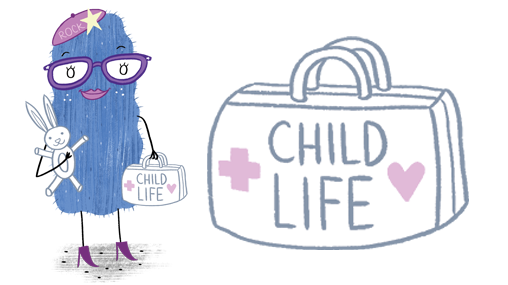A Pain Psychologist’s Perspective: Living with Ehlers–Danlos
A unique perspective on what it's like to live with Ehlers Danlos Syndrome
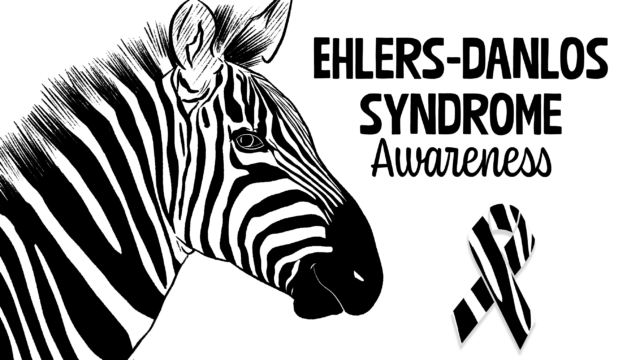
Jody Thomas, PhD
Babies & Toddlers (0-2) Kids (3-11) Tweens & Teens (12+) Chronic Pain English
Share this:
EDS Awareness Month 2025 Update: A Renewed Patient Perspective
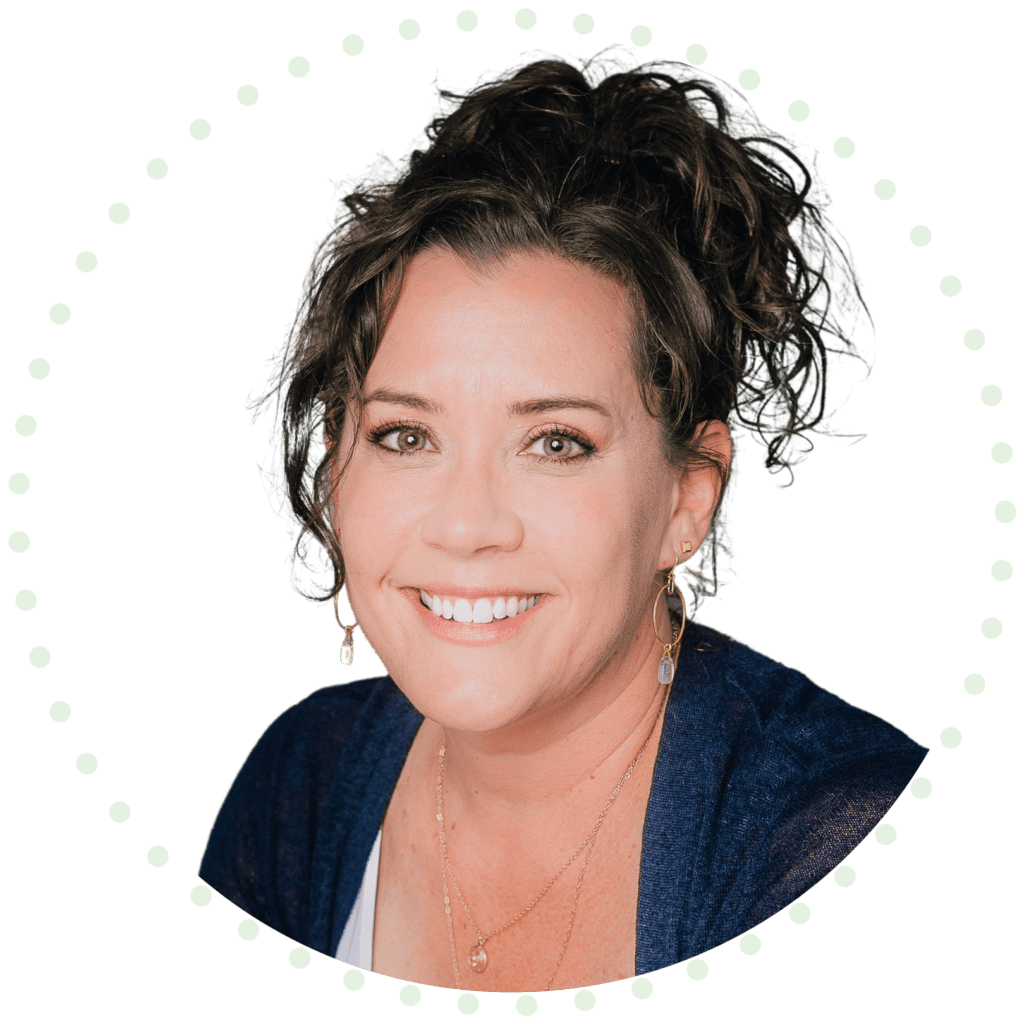
As a person with Ehlers–Danlos Syndrome, my first and most important job when I get any kind of medical care is to figure out if the medical providers I’m dealing with have any idea what EDS is and how it can and should affect their treatment decisions.
A close second job is figuring out if they will listen to me as a patient and be willing to consider what I have to say.
It’s an advocacy skill that is not easy: the medical system is often designed with the expectation that patients simply listen and comply. A lot of providers are rushed and too busy or, worse, quick to dismiss. Some are frankly arrogant—overestimating their own knowledge while underestimating their patients’. For most of my life, the vast majority of my providers had never heard of EDS and doubted its existence. It’s been up to me as a patient to educate them and to hope they’ll listen.
That can be a very dangerous game for someone with a genetic disorder that can impact nearly every tissue and organ system in their body. It’s terrifying to realize that a medical provider’s lack of knowledge could seriously hurt, or even kill, you. I know everyone would feel terrible afterward, but nonetheless, I’d still be injured or dead.
Having lived with this reality for the fifty years I’ve been on this planet, it’s hard to overstate just how reassuring it is to now go into so many settings where providers actually do know. Far fewer providers roll their eyes or say, “How do you spell that?” The last two procedures I had the anesthesiologist already knew how to compensate for the genetic differences in how people with EDS process anesthetics. When I take my daughter to urgent care and mention that she has EDS, they now more often nod in understanding than look confused. It is beyond exciting as a patient and as a parent—it is truly life‑changing.
These vital changes are a direct result of the amazing efforts of the EDS community and organizations like the Ehlers Danlos Society. We want to do our part to put this disease into the spotlight to help patients and their providers, who truly just want to do right by their patients. EDS has entered the mainstream—appearing on social media and in traditional outlets, in documentaries like Complicated, and even in popular books such as The Fourth Wing. Every story makes a difference, so here is mine:
When I was little…as young as seven years old, I would intentionally dislocate my right shoulder.
While it sounds gruesome, it wasn’t…with only a slight effort of just the muscles in that upper arm, I could simply slip it out of it’s socket and then snap it back in, quietly, quickly, and repeatedly. It was a nervous habit whenever I was bored or feeling nervous. Think of it as an advanced version of cracking your knuckles. It never struck me that this was odd, and it didn’t occur to me that other kids in my class couldn’t do the same thing.
Something I knew other kids couldn’t do was turn their feet around backwards. It was a trick I had discovered I could do by the 5th grade, and it was pretty disturbing to watch. I thought the shrieks and laughter every time I did it, from kids and adults alike, were hilarious. It definitely got me street cred on the playground that I could wrench my feet all the way around so my toes would be pointing backward…and then I could walk that way. We all laughed and thought it was cool.
I think it is less cool now with my aching hips, osteoarthritis, and unstable back as a middle aged woman. And unless I’m really on top of my PT exercises, now that shoulder will fall out of its socket when my muscles relax when I sleep.
The road to diagnosis is long and winding.
It wasn’t until I was well into my 20’s, after YEARS of doctors and multiple healthcare institutions, that I discovered the reason I could do these “weird” things was a genetic disorder known as Ehlers-Danlos Syndrome. Specifically the hypermobile type. While it’s a long and complicated explanation if we get into the weeds of it, the main gist is that my connective tissue is pretty darn terrible because of a genetic mutation that causes problems with the collagen and other proteins that make up that tissue.
For those who don’t know, connective tissue is body tissue that supports, protects, and gives structure to other tissues and organs in the body. Mine happens to be very weak and poorly made, from my blood vessels to my skin to my ligaments. It stretches too far, doesn’t heal well from damage, and overall just doesn’t do its job well, which creates a whole host of health problems. It you want great information about my type and all types of EDS, you should most definitely check out the Ehlers Danlos Society’s website.
I also learned I had the very common co-morbid disorder known as Postural Orthostatic Tachycardia Syndrome. In normal people speak, that means my autonomic nervous system doesn’t work very well, and I can struggle to control things like my heart rate, blood pressure, and body temperature. Among other things, it means my heart often goes way too fast, I can pass out a lot, and my body can’t function when it’s too hot.
The combination of these diagnoses is now recognized as more common, but it was definitely not 20+ years ago when I was searching for answers. I wanted to know why my hands would tremor violently, why I would pass out all the time, why I often felt sick and why it could be sometimes be very hard just do typical things. It was not normal for a 19 year old girl to struggle with holding a tooth brush in the morning, but it was stunningly difficult to get the medical world to take it seriously. I had doctors look me in the face and say, “sometimes people just shake and faint a lot” as if that settled the matter.
The road to diagnosis and the struggle for good treatment has been quite the journey, which unfortunately is EXTREMELY typical for patients with EDS. In fact, the average time to diagnosis is ten to twelve years. It’s why increasing awareness is so critical for patients and providers.
Even the smartest doctors don’t know everything. I was dismissed over and over again by some of the top institutions in the world.
I’m very aware that I was extremely lucky and privileged just to get to the top medical centers in the world, even if I had to bear the polite (or not so polite) condescending smiles and clear doubts of doctors who often did not believe me. To them, it didn’t make sense, though in retrospect it all makes perfect sense. Nearly every consultation ended in a recommendation for a psychiatric consult…and yes, my gender did have a lot to do with that. Given I was a young female, they seemed to always want to believe I was either anorexic, pregnant, anxious, “histrionic,” or all of the above. It was none of the above. I was not “crazy”: I had genetic disorder. Believe me, I would have preferred the “crazy”…it would have been a lot easier to treat.
It wasn’t until a very special doctor who took the time to get very curious and ask the right questions that I actually found the answers I had spent literally years searching for.
Getting the Ehlers-Danlos and POTS diagnoses was a relief because it explained so much that hadn’t made any sense before.
It explained why when I got glasses when I was 7, I already had worse vision that anyone in my family. My eyes then deteriorated so quickly year to year that by 3rd grade I was legally blind (thankfully correctable). Apparently that’s what happens when you have bad, unstable eye tissue. It also explains why I had to have cataract surgery at the age of 45, and why my retinas tore from the stress of that surgery, which of course had complications. Like so many with EDS, most of my body tissue tears easily and doesn’t heal well.
Though we didn’t know it until many years later, EDS also explained why we discovered when I was just four years old that I am nearly completely deaf in my left ear. Turns out that part of my body is also structurally “unsound,” quite literally this time.
It also explained why I was often sick as kid with general sense of not feeling good but with never a real explanation. Looking back, I’m sure my doctor just thought I was a dramatic little kid, working my mother so I could miss school. I’m sure he thought my mom was “coddling me” when she would let me stay home. But I loved school, and hated missing it…I just didn’t feel good so much of the time.
It’s why I mysteriously started regularly passing out in high school. I would lose consciousness so often that my friends would call it the “Jody dance” when they would wiggle their bodies and fall to the floor. That only worsened in college, where my tremors and fainting were so much a part of my being that everyone simply came to see it as standard procedure. The dislocating and subluxing joints also became standard, and the chronic pain was starting to take hold. My insane flexibility that was seen as an asset by dance teachers started to take a major toll on my body.
Having a family and giving birth was definitely complicated.
My two pregnancies nearly killed me, literally. I spent months on bedrest where the goal was simply to keep me and the baby alive. Both of pregnancies ended early and abruptly with preeclampsia and dangerous emergency c-sections. I had to be in the ICU both before and after delivery. While both babies came early, my daughter had to be delivered in dramatic fashion at just 33 weeks and ended up in NICU herself for almost a month. Truth be told, my body has never fully recovered from the births, but the two amazing humans I get to raise now were well worth the price.
Things aren’t always what they seem, and that comes with a price.
What’s odd about this is that nearly all the people who ever met me, professionally or personally, would not know any of the above. They would see me as “normal,” or as normal as a human being gets anyway. EDS is very often a hidden illness, which carries it own sort of special stigma. Despite all the above, I functioned…and still function…at a very high level. I was a huge overachiever…a top student, a dancer, a swimmer, went to college and grad school, ended up a clinical psychologist specializing in medical illness, trauma, and pain (and no, the irony is not lost on me).
But there were very real and very large barriers I had to contend with, and those barriers were often not obvious or completely invisible to others. More often than not, no one could see my symptoms or my pain. If I was to be “seen,” I would have had to tell people and explain myself…and hope they would believe me. Sometimes they would, and sometimes they wouldn’t. I had to always be prepped for either reality, which is a sadly essential skill set for anyone dealing with chronic illness. I more often than not just chose not to say anything rather than risk judgement.
Because I can appear “normal” people struggle to believe that my health can be so precarious. They struggle to believe that I have to spend so much of my time and resources on keeping my body and my health together. It’s honestly just a huge pain in the ass.
Managing my illness is a full time job…on top of my other full time jobs.
I currently see nine different health specialists, from cardiology to neurology to orthopedics to rheumatology. My daily early morning walks are not just a product of discipline and good habits: without them, I would quickly lose my ability to walk because my unstable spine causes numbness and loss of function in my right leg. I am at least two inches shorter than I once was as my spine essentially collapses on itself.
When I wake in the morning, my lower back is not aligned as the vertebrae move out of place when my muscles relax during sleep. I can feel the vertebrae bones scraping against each other, and if I’m honest, the pain is intense until I can do my exercises and activate my muscles in the right way to force the spine back into alignment. Before I do so, my right leg doesn’t work very well, if at all. I think of it like putting together a set of Legos that I need to do each morning. I have to use those walks to remind my right leg of how it needs to work.
Because of the loss of sensation and what is called proprioception, I can’t tell where my leg is in space unless I’m looking at it. That means to control it, I have do on purpose and with great intention what used to happen automatically. On days I can’t do my walks or have to sit for long periods, the pain in my back and joints increases exponentially, and my ability to actually use my leg drops significantly.
It is simply what I have to do to make it things work. In my mind, there is no other choice. It’s not that I don’t ever get frustrated, but that is mostly about the time it takes. I am a busy mom and professional. I just would love to use that time to do other things.
Physical therapy is key to my quality of life.
I’m only half joking when I say after my husband and kids, the most important relationship I have in my life is with my physical therapist, who is AMAZING. He helps me problem solve my body when the pain starts getting unbearable, or when a new symptom pops up. Like in the last few months, when suddenly my right ankle started dislocating spontaneously. We work together to figure out what isn’t working, and how I can exercise and strengthen certain muscles and groups to get the result we want. The goal: preserve function as long as possible. It’s definitely a team and collaborative effort, and one that is essential.
There is no one single medication, pill, or procedure that can take care of this. Treatment is complex, ever evolving, and requires constant problem solving. It demands understanding that both the illness and pain are a biological, psychological, and social experience. It requires a lot times coordinating doctors and opinions and getting providers to actually talk to each other.
It is often frustrating. But it is POSSIBLE.
The truth is that who I am as a person is so much more interesting and important than my medical issues.
I don’t say any this for attention or, even worse, pity. Quite the opposite, really. My health issues don’t mean my life is bad…in fact, it’s pretty awesome. I’m really lucky and feel grateful that I have a great family and friends, a job I love and find really meaningful, and wonderful support system.
If I’m being honest, it’s harder than I thought it would be to write this. Psychologists are trained not to reveal themselves, and well, this is a lot of revealing.
It’s also challenging because as a psychologist who has worked with pain patients for over 20 years, I spend a lot of time talking about how important it is to not define yourself by your disease or diagnosis. I always tell patients that who they are as a person is so much more important and interesting than their medical issues. It’s essential to be a person first, and patient second. Writing a blog like this feels like it puts my illness front and center, but the rest of my life does not, so this feels REALLY weird.
All that said, I do believe sharing this part of myself has value, which is why I am doing it. Revealing the underbelly of hidden disease has value. Being vulnerable, no matter how difficult, nearly always has value. If writing this and putting it out in the world does even one iota of good to build empathy, understanding, and awareness that serves other patients, it most definitely has value.
This will the first of a few blogs about what we call “lived experience” with my chronic illness and pain. I’m a patient, and I’m also a medical professional. I get the gift of seeing things from both sides of the fence. I have the unusual perspective of having spent years studying and treating these issues as a medical provider, and wrestling with them myself as a patient. If my experience can help anyone else, I’m here for it. Onward!
You May Also Be Interested In
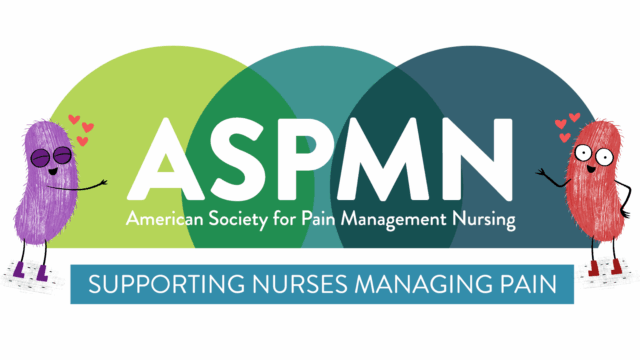
Blog Post
Empowering Nurses in Pain Care: How ASPMN Leads the Way
The American Society for Pain Management Nursing (ASPMN) empowers nurses to lead the way in compassionate, evidence-based pain care.
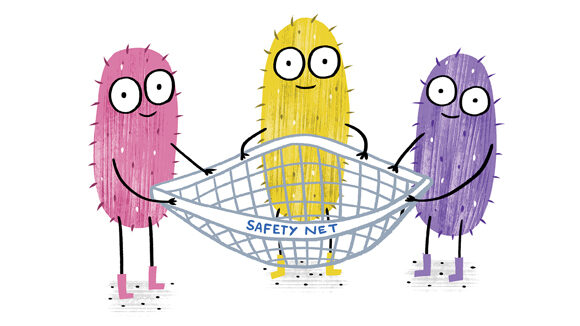
Blog Post
No Family Should Face This Alone
What would you give to keep a child from falling through the cracks? Right now, too many families are left behind—navigating pediatric care alone, often without insurance, support, or access to help.
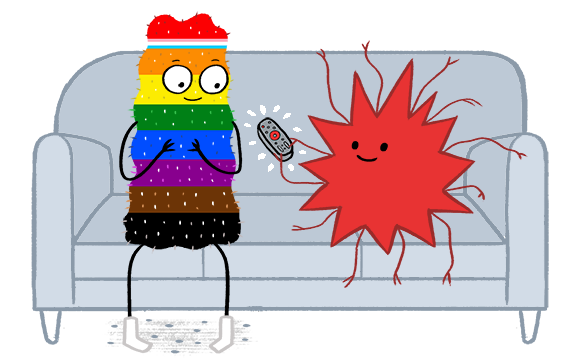
Blog Post
5 Ways Pain Affects the LGBTQIA+ Community
Pain isn’t just physical—it’s deeply shaped by who we are, how we see ourselves, and how the world treats us. For LGBTQIA+ individuals, understanding and addressing pain means recognizing the powerful role of identity, community, and inclusive, affirming care.
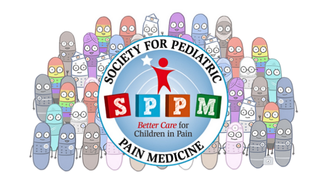
Blog Post
Why the World Needs the Society for Pediatric Pain Medicine
An interview with Dr. Rita Agarwal, Clinical Professor of Anesthesiology at Stanford and founding member of SPPM

About the Author
Dr. Jody Thomas is a licensed clinical psychologist, and specialist in pediatric medical illness and trauma. A well-known expert in pediatric pain who teaches internationally on the subject, she is also a founder and the former Clinical Director of the Packard Pediatric Pain Rehabilitation Center at Stanford, and a former Assistant Professor at the Stanford University School of Medicine. Though she now lives in Denver, CO, she still serves as Adjunct Faculty for Stanford, providing supervision and teaching. As a consultant for the Lucile Packard Children’s Hospital at Stanford, she directs projects on the integration and innovation of pain management using tech-based intervention. Her passion for bringing together the power of medical science, technology and design to transform the way we think about kids and pain led her to her current focus but it’s her role as a mom of two that solidified her path in creating the Meg Foundation.
